One thing juvenile fish apparently LOVE is LWD: large woody debris.
From the King County government website:
Large woody debris refers to the fallen trees, logs and stumps, root wads, and piles of branches along the edges of streams, rivers, lakes, [and other shorelines].
Some key benefits of large woody debris to fish and other aquatic creatures:
- It provides refuge for juvenile and adult fish at a wide range of river flows, such as flood events.
- It creates pools for juvenile fish and hydraulic complexity and roughness along the river bank
- It provides food sources and habitat for aquatic insects and wildlife along shorelines.
- It helps stabilize shorelines and reduce excessive erosion.
As there is not yet naturally occurring LWD in our newly constructed stream channel, it was designed and placed as part of construction so that the hydrological and habitat benefits will be immediately available.
Great care was taken to mimic naturally downed wood – a pool was dug around the root wad of this tree, just as would appear if the tree had upended itself. It will fill with deep, cool water and provide a nice place for a little fish!
Because we would like to stabilize the site and keep the design in place for some time, redwood (which decomposes slower than other kinds of wood) was used in many places. Rock was buried under the bank and the logs were bolted in place:
Here you can see the underside of the bolt, going into the rock:
The redwood used for this project was planted for and removed from a local housing development (the crew kept finding bits of irrigation pipe in the tree roots). It’s nice to know the source of the wood – and know that it’s not coming from a redwood forest somewhere.
A lot of willow salvaged from the old creek bed (below) and some cypress removed from the site last year were also used:

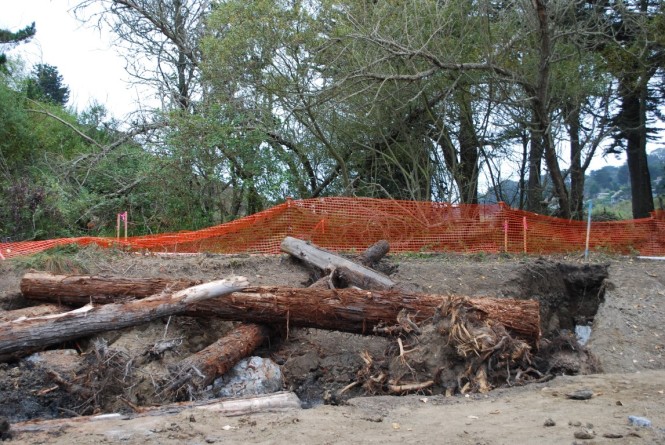
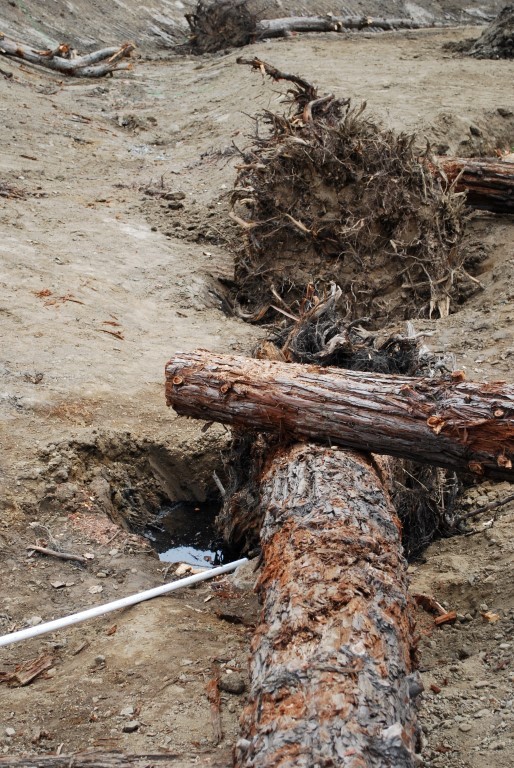
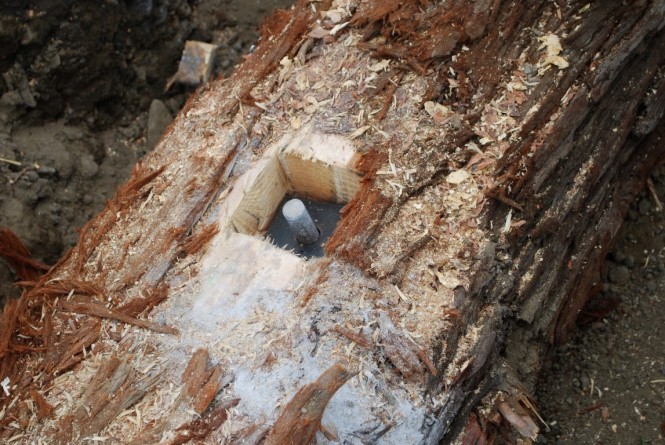
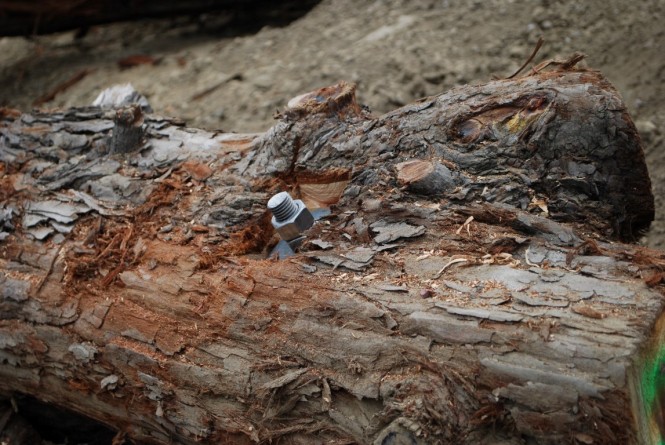
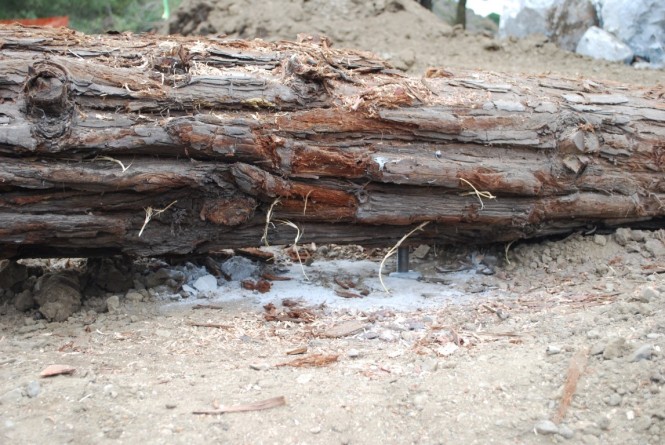
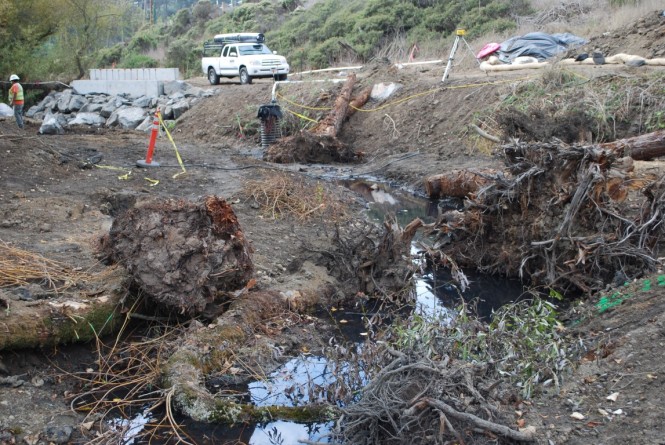
It’s so interesting to see that what we humans call “debris” has such a vital function for water-based ecologies. Question: why is “hydraulic complexity” important?